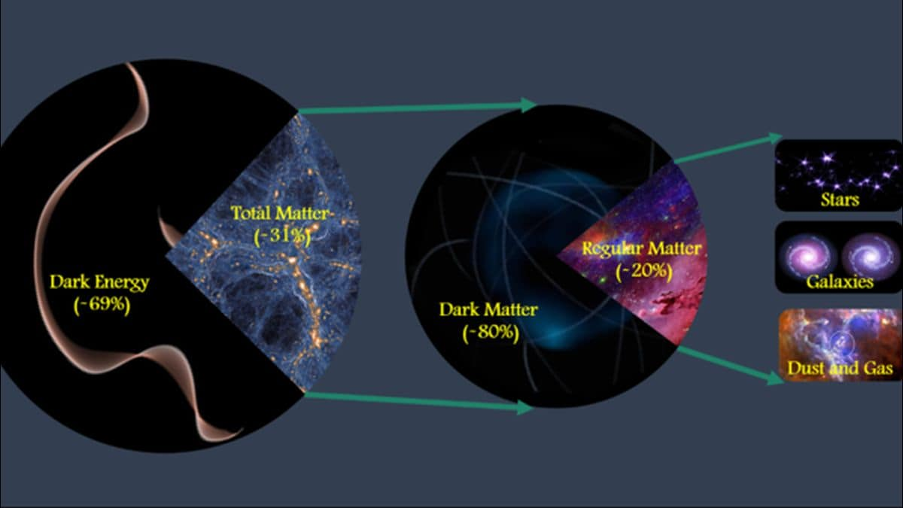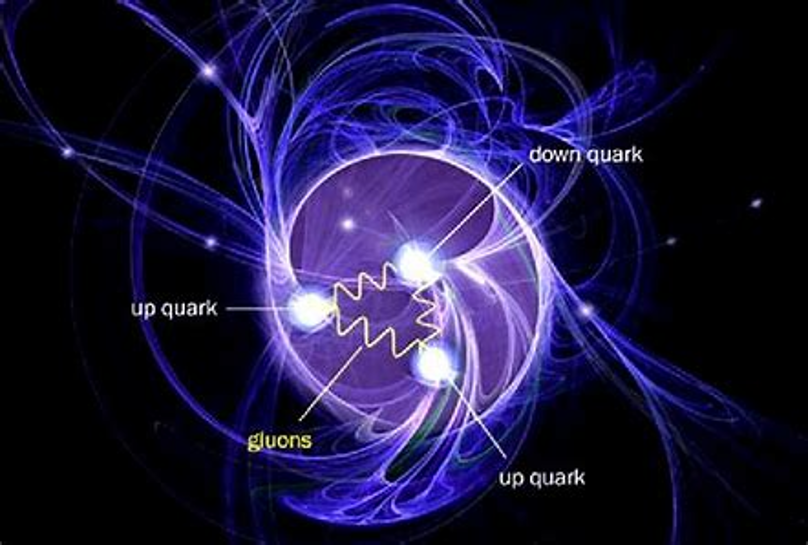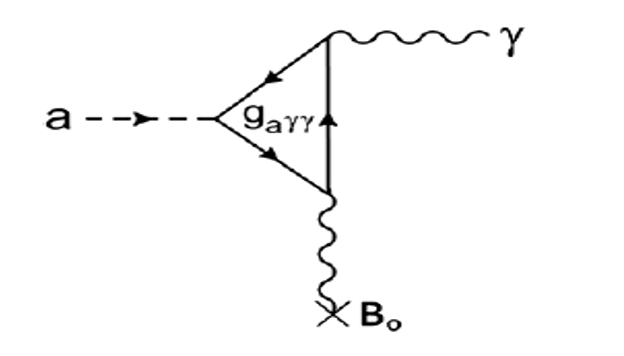

Cosmox Blogs
Axions: The Key to Dark Matter’s Mystery?
We all have heard about Dark Matter and probably even know about it. We know that 25% of the Universe is filled with it, it doesn’t interact much with anything in the Universe though it has a gravitational effect, and that scientists today cannot find what it actually is. And to think about it you are not wrong; scientists are not able to experiment or exactly know what it is, but they do have dark matter candidates. Dark matter candidates are theoretical particles that are proposed to explain the presence of Dark Matter. As we know we can’t directly observe the dark matter or experiment with it, but these theoretical particles can help us predict its behavior and can further allow us to experiment. This isn’t the only time we have candidates, when the Higgs Boson was discovered in 2012 by the Large Hadron Collider (LHC), and a theoretical particle was used to explain proposed by theoretical physicists the phenomena of why particles have mass.

History
Let’s take a quick look at how Dark matter was found. In 1930 Fritz Zwicky a Swiss-American Astronomer was trying to calculate the mass of the Coma cluster and he found out that the mass through velocities shows 400 times more mass than the mass he can see through the Luminosity equation, he called this Dark Matter. Then 40 years later Vera Rubin and her collaborators wrote a paper that there is a lot of missing mass in our galaxy. This observation showed there was something we don’t know in the galaxy and cluster that was adding more mass to it. This led to the discussion of dark matter, and to this day scientists are trying to find what it is.

To dive deep into it we need to first know what we know about dark matter:
-> The local density of dark matter is around 0.3 to 0.4 GeV cm−3, equivalent to one proton every few cubic centimeters or one solar mass per cubic lightyear.
-> The velocity dispersion of dark matter is around v = 200 km s−1.
-> Darkmatter has gravitational influence, its gravitational influence began before the universe was 1 year old
-> Dark matter cannot interact with itself or ordinary matter too strongly
Introduction
All of this starts from the concept of physics which talks about symmetry. This means physics laws remain symmetrical with respect to the Universe. In other words, if you have an equation in physics, and you change one of the properties of the Universe, the process in the equation will still stay the same, that is a symmetry to that transformation. For example, in mirror(P) symmetry, when you flip the world (x,y,z components) the world would still work the same way as it was before. Another example is charge(C) symmetry flipping the charges will not change a lot; with these transformations, most of the physics equation would still stay the same. An example shown above is the system called CP symmetry, this means that the world would look the same if we swapped the particles with antiparticles and looked at its mirror.
-> C- Stands for charge conjunction and is a mathematical operation that transforms a particle with an antiparticle- as every charged particle has an opposite charge particle (antimatter counterpart, or antimatter).
-> P- Stands for parity, which means flipping the spatial coordinates as if looking at an object's mirror reflection- meaning x, y, and z these three dimensions change respectively to -x, -y, and -z.
-> Most fundamental laws of physics in this Universe stay the same under this CP symmetry.
2 fundamental forces in this Universe violate this symmetry; Weak nuclear force and strong nuclear force. Weak nuclear force(The only force aware of the spine of the particles involved and whether they are matter or antimatter) is NOT symmetrical under the CP inversion. This violation is key to understanding the imbalance between matter and antimatter in the universe. But the problem starts from the strong force, it’s described by quantum chromodynamics or QCD. QCD is a theory that explains the strong interaction between quarks and gluons, the fundamental particles that make up composition hadrons such as protons, neutrons, and pions.

The equation of motion of the strong force constructed by QCD actually allows the violation of CP symmetry. This equation QCD itself allows to violate the CP. There was an experiment done to prove this violation, where it’s predicted that the neutron should exhibit an electric field like you’d get from a pair of positive and negative changes in an electric dipole field, but even measuring very closely the scientists were unable to detect any electric field, and even if it was there it would be trillion times weaker than predicted by CP violating QCD. It is good to note that the violation of CP by weak forces is experimental and has been proven, but the violation of CP by strong forces is not. This clash between the experiment and the theory introduces the axion.
QCD
As there is no evidence of this violation has been detected experimentally. But there was an explanation for why we couldn't see it. If we look closely, QCD’s vacuum itself allows the violation of the CP. The word “Vacuum”-means the lowest energy state, found when there are no particles around. In QCD there isn’t just one energy state but an infinite amount of minimum energy states, the vacuum hops between different field energies even though the potential energy stays the same. It gets more weird when the vacuum fills up all the vacuum states at once. Looking at this behavior of vacuum new terms were added, and those terms will be controlled by one constant theta "θ". The problem of value over here is that if θ is constant it would equal zero, which would cause all the terms to vanish, which is not at all good cause this would lead to the same problem again.

To solve this problem Peccei-Quinn made another solution in 1977, there they concluded that θ is not a constant. They explained that θ can change its value over space and time. In other words making θ a new type of field, instead of a fundamental constant. In the vacuum state, the θ will naturally fall to zero, as the energy of the overall vacuum is decreased.

Turning theta into a quantum field cleans up the problem because we know the fact that in a quantum field, a particle is just an oscillation. So the new field of θ can also oscillate very slightly around its value of zero. This oscillation gives us Axion.
The Axion solution:
-> The Standard Model contains a constant, ▁θ, which is known to be an angle and is between 0 and 2π. Symmetry specifies no preferred angle.
-> The value of this angle determines the neutron EDM, ∣d∣= 3.6 × 1 0 −16 ̄e cm. Measurements are consistent with ▁θ≲10^(-10), suggesting some missing symmetry.
What we know about Axion: This hypothetical axion particle would have
-> No electric charge
-> No quantum spins
-> Will be extremely light, and will have a tiny fraction of a tiny electron.
-> It would interact very weakly via weak and strong nuclear force and will interact with gravity.
Even though axions don’t have an electric field they can still interact with the electromagnetic field(EM) and can produce photons via strong force. The Primakoff effect is an effect where the axion and EM when coming into contact would generate pairs of virtual quarks which then decay into photons, it will look like an axion turning into a photon and we can do vice versa.

It has been tried to be tested, where light is passed through a strong magnetic field and then blocked by a metal wall. Because of the magnetic field, the photons will get converted into axions, which will allow them to cross the metal wall. After passing, those axions again interact with the magnetic field which will convert axions into photons. But we are not able to see this happening, one reason that is suggested is that we don’t have enough of an artificial magnetic field.
Experiments on Axions
The CERN Axion Solar Telescope (CAST) is in Switzerland, where it uses solar energy to capture axions. If axions exist it is obvious that it is being produced in reasonable quantities at the sun's core. Where x-rays are being scattered constantly bouncing off electrons and protons in the presence of strong EM. These are the perfect conditions for producing axions, so the sun emits countless axions. CAST detects it and uses its own strong magnetic force to turn it back to photons.

If we look at the Universe magnetars are highly magnetic pulsars that can convert axions into photons coming in their way and vice versa. Quasars may even convert some of their own gamma rays into axions, which can be measurable by looking at the dip. Some astrophysicists think that some gamma rays get converted back and forth between axions and photons by the magnetic field of the entire galaxy. That makes axions invisible to us, as they might get converted into photons while traveling their journey to us.
Conclusion
Dark matter remains a significant mystery in astrophysics, with proposed theoretical candidates like the axion offering possible explanations. Despite being undetectable through direct interaction, dark matter’s gravitational influence is evident, and research into particles like axions is key to understanding it. Axions, predicted to be light and weakly interacting, might help explain the absence of CP symmetry violation in the strong force. Experiments like the CERN Axion Solar Telescope (CAST) aim to detect these particles, which could revolutionize our understanding of the universe if proven real, influencing both cosmology and particle physics.

Cosmox Blogs
A non profit organization that works on writing and delivering blogs on cosmology, natural sciences & environment, so that people can learn more about it. We even run a forums page, where our users interacts with each other and discuss about Cosmology, Natural Sciences & Astronomy. We even run an instagram and a youtube channel with podcasts.